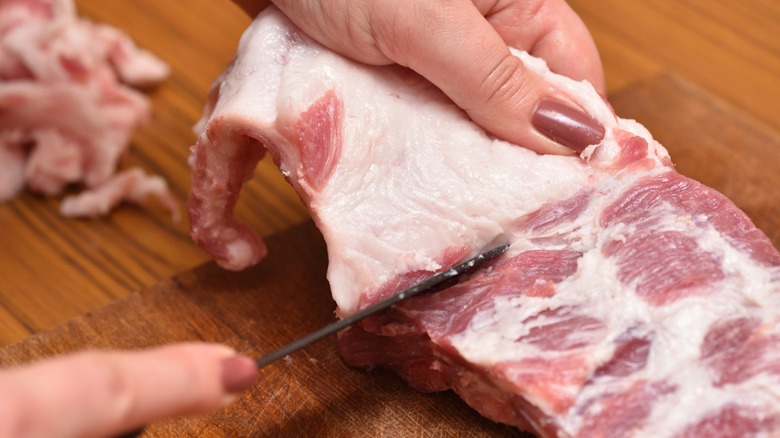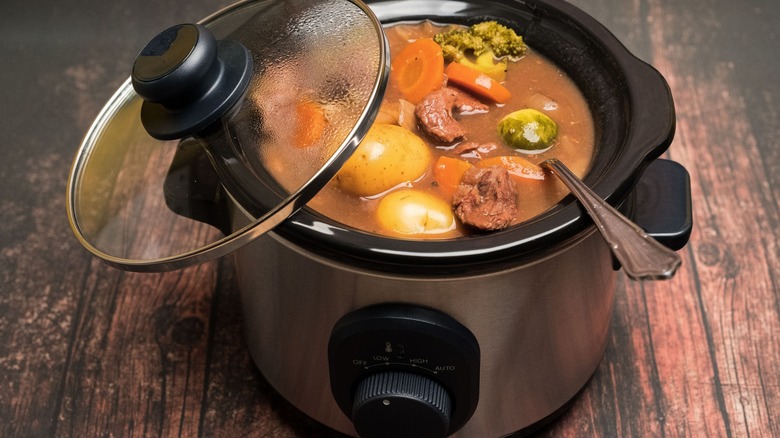Why It Pays To Trim The Fat From Meat Before It Goes Into Your Slow Cooker
Slow cooking is adored for its ability to transform tougher cuts of meat into tender, flavorful masterpieces, but there's a subtle art to preparing the meat for this culinary venture. One often-overlooked but vital step is trimming the fat off the meat before placing it into the slow cooker. This seemingly minor slow cooker tip ensures your meal won't be overwhelmed by excess oil, thereby preserving the integrity of the dish.
Slow cookers are enclosed environments where heat is evenly distributed to cook the meat gently over several hours. This allows for the breakdown of connective tissues in the meat, naturally enhancing its tenderness and flavor. However, this also means that the fat rendered from the meat in the process has nowhere to escape, leaving it to linger and saturate your carefully planned meal and turn it into an overly greasy disappointment.
Trimming the fat from your meat before slow-cooking also has aesthetic and textural advantages. It presents a more appetizing appearance, rather than enveloping your ingredients in a murky layer of oil. Without the unappealing layers of oil and liquid, the consistency of your sauce or gravy will be more refined and complementary to the meat.
Rescuing your dish from the clutches of excess fat
Unfortunately, even the most attentive cook might forget this crucial trimming step and wind up with a stew that shimmers with an unintended oily sheen. But, fear not, for your delectable creation is far from lost. When faced with an oil-slicked stew, carefully skimming off the fat before serving can save the day.
Once your dish concludes its slow-cooking process, allow it to rest for a few moments. Wait for the fat to rise to the surface, then use a large spoon or ladle to gently scoop off the unwanted oil. Patience and a steady hand are your allies in this delicate operation, ensuring you remove the fat while preserving the body of your sauce or gravy. Alternatively, you can chill the stew in your refrigerator until the fat solidifies, then easily scoop the solid fat out. So, whether you trim off the fat before cooking or skim it out later, removing the excess fat will allow the rich flavors of your slow-cooked masterpiece to flourish.

